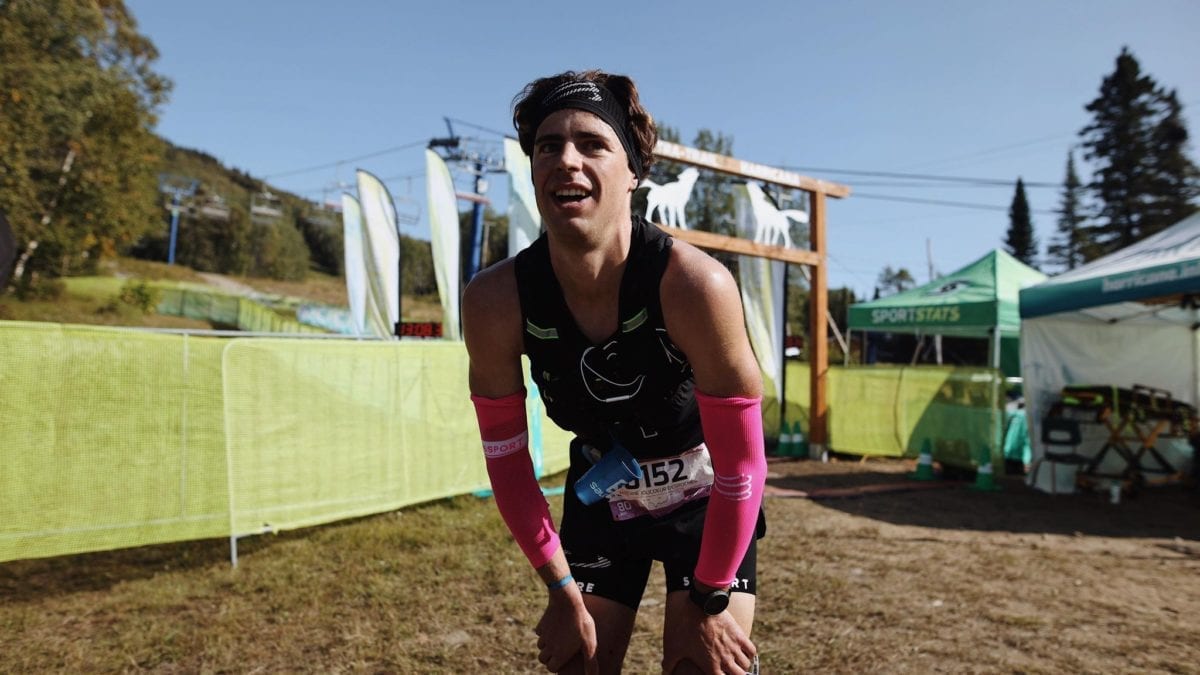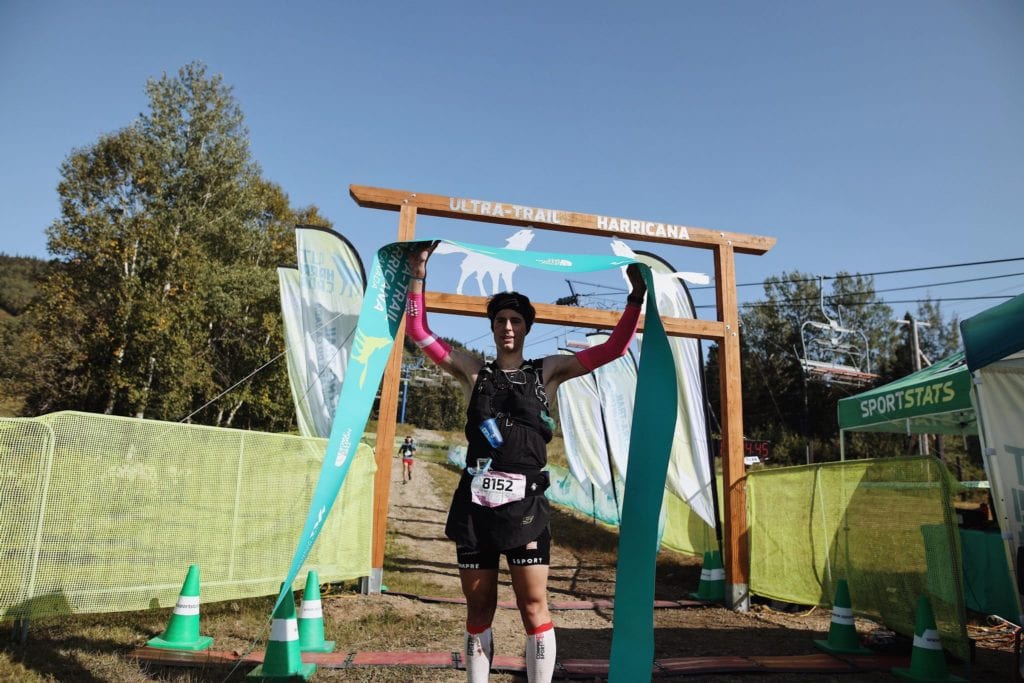An Ironman pro offers 6 tips on how prepare, and stay mentally tough, for an ultra-distance run
Tips on how to stay mentally tough in your next endurance challenge
 Photo by:
Alexandra Côté-Durrer
Photo by:
Alexandra Côté-Durrer
Last weekend I competed at my first ultra trail race, the Ultra Trail Harricana 80 km. In 2019 I competed in a road ultra (60 km) across Montreal, but this event was really different because it was technical, hilly and the distance was longer (80 km).
I always wanted to compete in an ultra, and with the cancellation of triathlons this summer, the timing was perfect. At first I wanted to compete in the 65 km ultra race, but it was already full (that event filled up about 12 weeks before the race), and there was only one place left for the 80 km, so without thinking about it, I registered for the race.
So I had 12 weeks to become an ultra runner. I had been doing a lot of cycling – a mix of road, gravel and mountain biking, but I wasn’t running a lot. My weekly running mileage was a lot less than what I needed to do to be ready for an ultra, but since I love a good challenge, it seemed like a great opportunity to test myself and push my limits, both during the race and during the weeks of training.
My mileage
After registering for the race, my training changed a lot. I did less cycling and swimming and slowly increased my run mileage. I used my cycling and swimming as recovery training and cross-training.
I went from 30 to 40 km of running per week to 80 km, 90 km and up to 150 km. I also increased the length of my longest run. For the first few weeks I did two to three long runs of about 20 to 25 km in trails. Even though it’s not a great distance, it took a lot more time to complete these runs over technical and hilly trails. A few weeks after beginning my trail-running training, I was able to do my biggest running day – two trail runs of 25 km for a total of 50 km in a day. I knew that doing one big 50 km run would have been too hard on my body, so that’s why I preferred to divide this big day of training in two “shorter” runs.
Related: Goats are the go-to training partners for this ultra athlete
My longest run
When I train for an Ironman, I usually do my longest run three weeks out of the race so that I can do a two week progressive taper. Usually my longest run is around 34 to 36 km, which corresponds to 80 to 85 per cent of the distance of a marathon. If I used that same logic, my longest run for my preparation for the ultra should have been 64 to 68 km. That seemed a bit long, so I talked to a few ultra-runners and most of them told me that my longest run should be around 50 to 60 km.
So I decided to do a 50 km-ish long trail on Le Corridor Aérobique (a gravel running and cycling path) in Morin Height, and to do at least 50 km. If I felt great I would do the full length of the running path, which is 58 km. I was actually hoping that I could run the full length of the running path, and maybe set a FKT (fastest known time), however after only 30 km my legs were already destroyed. (I’ll have to go for the FKT another time!). I started way to fast, hoping to run a fast time, and I paid the price. Even though I felt really bad at 30 km, I was able to run 20 more km, and I felt better at 50 km than at 30 km.
Lessons 1 and 2: First of all, if you start too fast, you’re going to pay the price later. Secondly, you might feel really bad in the middle of your ultra, but that doesn’t mean you’ll feel bad for the rest of the race. An ultra is such a long race that, contrary to a marathon where you usually hit a wall once, during an ultra (and also during an Ironman) you may hit two to three walls, but you are able to recover and move forward.

The race
The race started in a national parc in La Malbaie at 8 am on Saturday. Due to the COVID-19 pandemic, the start of the race was staggered. A group of six to eight elites started first, then, a few minutes later, there was a group of six, and then I started with six other people. Having never completed a trail run, I was not in the elite group, but I was actually happy to start after them since I was playing a game of cat and mouse.
I caught the elite group, except three of the runners, at around 8 km. There were some great runners in the group, but instead of staying with them, I decided to continue alone and try to catch the three front runners. Before the 20 km mark I caught another runner, and 5 to 7 km later I was able to catch the two front runners. I stayed with them for a few km, but since I’m not used to running with other people, I preferred to just go off the front.
In the back of my mind, I was also thinking about my finish time. The expected time for the winner was 7 hours and 19 minutes, and I was hoping to beat that time. However, looking at my time splits, I knew that I was on pace to go under 7 hours, so I gave myself the goal to stay under 7 hour pace.
Lesson 3: No matter what race you are doing (a 5 km road race, an Ironman or an ultra trail race), it’s important to have multiple goals. I also believe that instead of a “negative” goal like “not get caught by my competitors,” “not DNF,” “not finish out of the top three,” your goal should also be “positive.” For instance, if you are leading a race, you should find time goals, like beating a course record or maybe running faster than a specific pace. If your only goal is to not DNF, or to not get caught by your competitors, you could slow down and still achieve your goal. But, if you give yourself other challenging goals, you have to keep up the pace and maybe even go faster.

That’s how I stayed driven and motivated for the next four-plus hours.
In my head, my competitors were still in front of me and I had to keep up the pace to try to catch them.
Lesson 4: In a long endurance event like an Ironman or an ultra, you have to play mind games in order to not listen to the voices in your head telling you to slow down or to give up.
In the end I finished first in 7:06.
I was really happy how the race went. Obviously, as usual, after the race you think of the many ways you could have raced faster and smarter. But overall, even though I slowed down a little bit after the first 40 km, and that my hydration/nutrition strategy was not perfect (I was super-dehydrated after only 30 km), I believe it was a pretty well executed race.
I learned a lot during the race, especially how I can push my body to its limit for so long. The pain in my legs during, and after, the race was absolutely horrible, but even if it was a big physical challenge it was mostly a mental challenge.
Related: 5 Things you need to know about the Ultraman Triathlon
Once you challenge what you think is possible, you learn that you can go further and faster. But the only way to know where your limits lie is to try to find them.
Navy Seals, ultra-endurance athlete and author, David Goggins believes in the 40 per cent rule, which states that “when your mind is telling you you’re done, you’re really only 40 percent done.”
The more I think about it and the more races I do, the more I think it’s true.
Lesson 5: Maybe you think you are done because you’ve hit a wall during an ultra or an Ironman, but you can actually recover from that “bonk,” get back up and run for a lot longer.
Lesson 6: There will be many more “bonks” or “walls,” but those walls are meant to be scaled or torn down.
